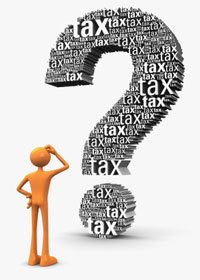Tax relief on capital costs
Written by Ray Coman
Capital allowances are a tax relief for outlay on capital. Capital costs are those required for the business to run long term, such as vehicles and equipment. To reflect the length of time that capital is used in the business, only a proportion of the capital costs are deducted from profits each year. This proportion is called the capital allowance. By distinction, revenue costs are those required immediately in the business. Most revenue costs are deducted straight away against from profits.
 In an attempt to relieve the cash flow implications of this system for small businesses and sole traders, the government has introduced an annual investment allowance (AIA.) The AIA provides 100% relief for expenditure on most capital used in the business up to a yearly maximum. As a result, capital costs up to the annual limit are effectively treated in the same way as revenue costs for tax purposes. If the business has invested more than annual investment allowance for the twelve month period, any balance is relieved at the writing down allowance rate.
In an attempt to relieve the cash flow implications of this system for small businesses and sole traders, the government has introduced an annual investment allowance (AIA.) The AIA provides 100% relief for expenditure on most capital used in the business up to a yearly maximum. As a result, capital costs up to the annual limit are effectively treated in the same way as revenue costs for tax purposes. If the business has invested more than annual investment allowance for the twelve month period, any balance is relieved at the writing down allowance rate.
However, the 100% annual allowance rarely applies to cars. The rate of allowance given to a car depends on its CO2 emission, so that the less a car emits the faster the business will benefit from tax relief.
It is possible to deduct certain costs on features which are integral to a building, such as lighting, heating and air conditioning systems. This can apply even to commercial premises which are not new builds. The annual investment allowance can apply to integral features and the balance could receive an allowance at the special rate. The tax reliefs can be significant and should be considered when planning the premises for your business.
If an asset is sold for more than the capital allowances left to deduct from profits, the surplus could be treated as extra profit for the year. It could be worthwhile considering the timing of disposals of assets which are likely to increase profits.
Where a company makes a loss as a result of investing in certain types of capital, such as green technology and research and development assets, a tax credit may be claimed. This could result in a government payment to the business. The payment is in the form of a tax credit rather than a tax refund.
There are incentives for certain types of investment that the government wishes to promote, such as for converting empty spaces above commercial premises into flats.
Various tax planning opportunities are available with capital allowances. It is possible to obtain allowances separately on assets which are expected to have a life of less than five years. This can accelerate tax relief. It is also possible to disclaim capital allowances, which can be an advantage where your tax free allowances would be wasted if the capital allowance was all used in the first year.
Discuss with us a budget for capital expenditure, which is aligned to business goals and optimised for tax.

